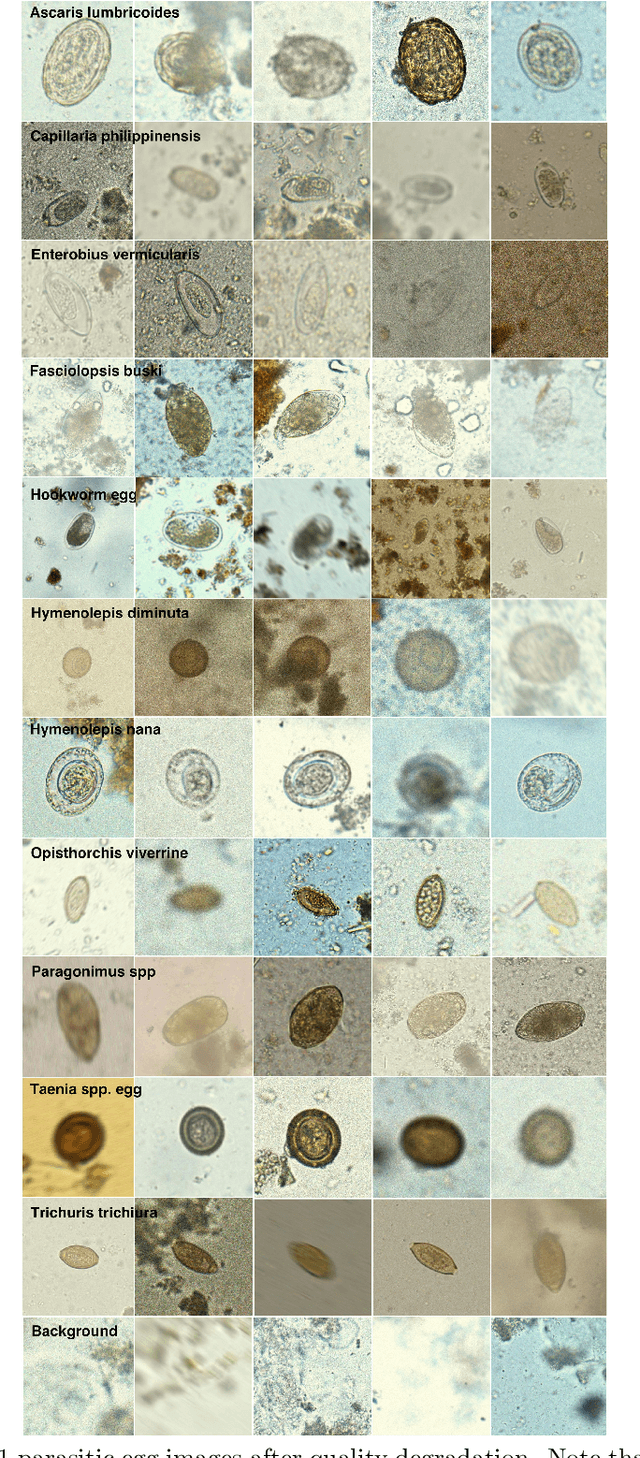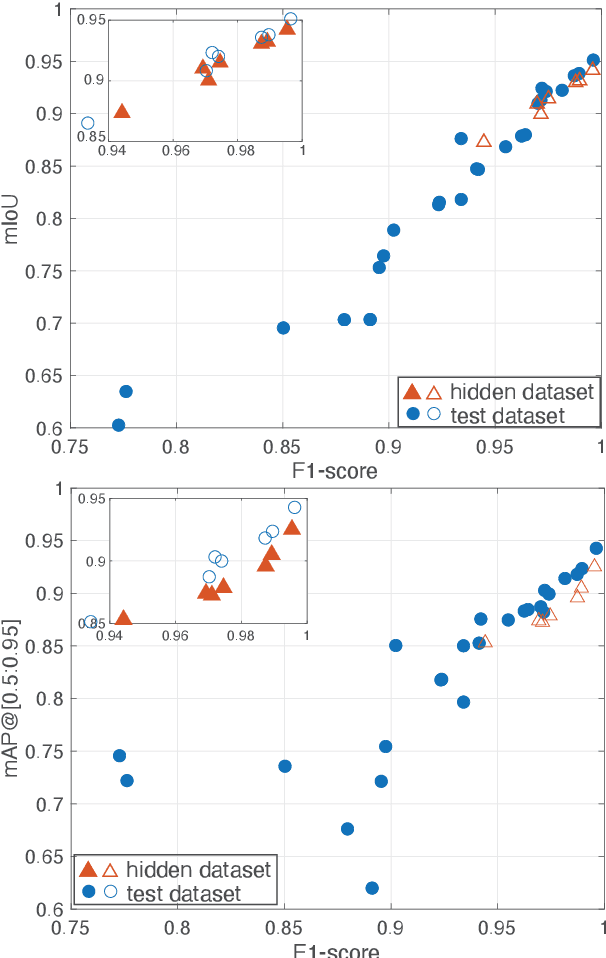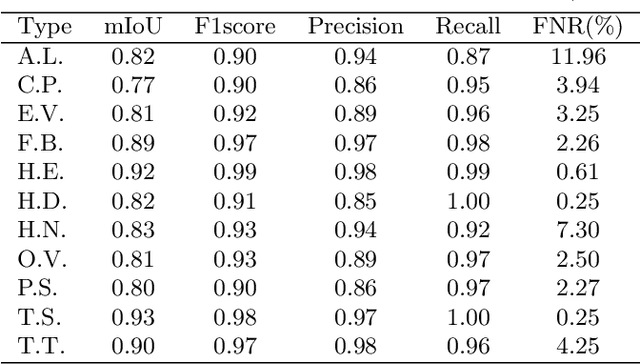Xudong Ma
Bootstrapping Diffusion: Diffusion Model Training Leveraging Partial and Corrupted Data
May 17, 2025
Abstract:Training diffusion models requires large datasets. However, acquiring large volumes of high-quality data can be challenging, for example, collecting large numbers of high-resolution images and long videos. On the other hand, there are many complementary data that are usually considered corrupted or partial, such as low-resolution images and short videos. Other examples of corrupted data include videos that contain subtitles, watermarks, and logos. In this study, we investigate the theoretical problem of whether the above partial data can be utilized to train conventional diffusion models. Motivated by our theoretical analysis in this study, we propose a straightforward approach of training diffusion models utilizing partial data views, where we consider each form of complementary data as a view of conventional data. Our proposed approach first trains one separate diffusion model for each individual view, and then trains a model for predicting the residual score function. We prove generalization error bounds, which show that the proposed diffusion model training approach can achieve lower generalization errors if proper regularizations are adopted in the residual score function training. In particular, we prove that the difficulty in training the residual score function scales proportionally with the signal correlations not captured by partial data views. Consequently, the proposed approach achieves near first-order optimal data efficiency.
An Empirical Study of Qwen3 Quantization
May 04, 2025Abstract:The Qwen series has emerged as a leading family of open-source Large Language Models (LLMs), demonstrating remarkable capabilities in natural language understanding tasks. With the recent release of Qwen3, which exhibits superior performance across diverse benchmarks, there is growing interest in deploying these models efficiently in resource-constrained environments. Low-bit quantization presents a promising solution, yet its impact on Qwen3's performance remains underexplored. This study conducts a systematic evaluation of Qwen3's robustness under various quantization settings, aiming to uncover both opportunities and challenges in compressing this state-of-the-art model. We rigorously assess 5 existing classic post-training quantization techniques applied to Qwen3, spanning bit-widths from 1 to 8 bits, and evaluate their effectiveness across multiple datasets. Our findings reveal that while Qwen3 maintains competitive performance at moderate bit-widths, it experiences notable degradation in linguistic tasks under ultra-low precision, underscoring the persistent hurdles in LLM compression. These results emphasize the need for further research to mitigate performance loss in extreme quantization scenarios. We anticipate that this empirical analysis will provide actionable insights for advancing quantization methods tailored to Qwen3 and future LLMs, ultimately enhancing their practicality without compromising accuracy. Our project is released on https://github.com/Efficient-ML/Qwen3-Quantization and https://huggingface.co/collections/Efficient-ML/qwen3-quantization-68164450decb1c868788cb2b.
Clustering Properties of Self-Supervised Learning
Jan 30, 2025Abstract:Self-supervised learning (SSL) methods via joint embedding architectures have proven remarkably effective at capturing semantically rich representations with strong clustering properties, magically in the absence of label supervision. Despite this, few of them have explored leveraging these untapped properties to improve themselves. In this paper, we provide an evidence through various metrics that the encoder's output $encoding$ exhibits superior and more stable clustering properties compared to other components. Building on this insight, we propose a novel positive-feedback SSL method, termed Representation Soft Assignment (ReSA), which leverages the model's clustering properties to promote learning in a self-guided manner. Extensive experiments on standard SSL benchmarks reveal that models pretrained with ReSA outperform other state-of-the-art SSL methods by a significant margin. Finally, we analyze how ReSA facilitates better clustering properties, demonstrating that it effectively enhances clustering performance at both fine-grained and coarse-grained levels, shaping representations that are inherently more structured and semantically meaningful.
BiDM: Pushing the Limit of Quantization for Diffusion Models
Dec 08, 2024



Abstract:Diffusion models (DMs) have been significantly developed and widely used in various applications due to their excellent generative qualities. However, the expensive computation and massive parameters of DMs hinder their practical use in resource-constrained scenarios. As one of the effective compression approaches, quantization allows DMs to achieve storage saving and inference acceleration by reducing bit-width while maintaining generation performance. However, as the most extreme quantization form, 1-bit binarization causes the generation performance of DMs to face severe degradation or even collapse. This paper proposes a novel method, namely BiDM, for fully binarizing weights and activations of DMs, pushing quantization to the 1-bit limit. From a temporal perspective, we introduce the Timestep-friendly Binary Structure (TBS), which uses learnable activation binarizers and cross-timestep feature connections to address the highly timestep-correlated activation features of DMs. From a spatial perspective, we propose Space Patched Distillation (SPD) to address the difficulty of matching binary features during distillation, focusing on the spatial locality of image generation tasks and noise estimation networks. As the first work to fully binarize DMs, the W1A1 BiDM on the LDM-4 model for LSUN-Bedrooms 256$\times$256 achieves a remarkable FID of 22.74, significantly outperforming the current state-of-the-art general binarization methods with an FID of 59.44 and invalid generative samples, and achieves up to excellent 28.0 times storage and 52.7 times OPs savings. The code is available at https://github.com/Xingyu-Zheng/BiDM .
Creating a Microstructure Latent Space with Rich Material Information for Multiphase Alloy Design
Sep 04, 2024Abstract:The intricate microstructure serves as the cornerstone for the composition/processing-structure-property (CPSP) connection in multiphase alloys. Traditional alloy design methods often overlook microstructural details, which diminishes the reliability and effectiveness of the outcomes. This study introduces an improved alloy design algorithm that integrates authentic microstructural information to establish precise CPSP relationships. The approach utilizes a deep-learning framework based on a variational autoencoder to map real microstructural data to a latent space, enabling the prediction of composition, processing steps, and material properties from the latent space vector. By integrating this deep learning model with a specific sampling strategy in the latent space, a novel, microstructure-centered algorithm for multiphase alloy design is developed. This algorithm is demonstrated through the design of a unified dual-phase steel, and the results are assessed at three performance levels. Moreover, an exploration into the latent vector space of the model highlights its seamless interpolation ability and its rich material information content. Notably, the current configuration of the latent space is particularly advantageous for alloy design, offering an exhaustive representation of microstructure, composition, processing, and property variations essential for multiphase alloys.
How Good Are Low-bit Quantized LLaMA3 Models? An Empirical Study
Apr 22, 2024Abstract:Meta's LLaMA family has become one of the most powerful open-source Large Language Model (LLM) series. Notably, LLaMA3 models have recently been released and achieve impressive performance across various with super-large scale pre-training on over 15T tokens of data. Given the wide application of low-bit quantization for LLMs in resource-limited scenarios, we explore LLaMA3's capabilities when quantized to low bit-width. This exploration holds the potential to unveil new insights and challenges for low-bit quantization of LLaMA3 and other forthcoming LLMs, especially in addressing performance degradation problems that suffer in LLM compression. Specifically, we evaluate the 10 existing post-training quantization and LoRA-finetuning methods of LLaMA3 on 1-8 bits and diverse datasets to comprehensively reveal LLaMA3's low-bit quantization performance. Our experiment results indicate that LLaMA3 still suffers non-negligent degradation in these scenarios, especially in ultra-low bit-width. This highlights the significant performance gap under low bit-width that needs to be bridged in future developments. We expect that this empirical study will prove valuable in advancing future models, pushing the LLMs to lower bit-width with higher accuracy for being practical. Our project is released on https://github.com/Macaronlin/LLaMA3-Quantization and quantized LLaMA3 models are released in https://huggingface.co/LLMQ.
BinaryDM: Towards Accurate Binarization of Diffusion Model
Apr 08, 2024



Abstract:With the advancement of diffusion models (DMs) and the substantially increased computational requirements, quantization emerges as a practical solution to obtain compact and efficient low-bit DMs. However, the highly discrete representation leads to severe accuracy degradation, hindering the quantization of diffusion models to ultra-low bit-widths. In this paper, we propose BinaryDM, a novel accurate quantization-aware training approach to push the weights of diffusion models towards the limit of 1-bit. Firstly, we present a Learnable Multi-basis Binarizer (LMB) to recover the representations generated by the binarized DM, which improves the information in details of representations crucial to the DM. Secondly, a Low-rank Representation Mimicking (LRM) is applied to enhance the binarization-aware optimization of the DM, alleviating the optimization direction ambiguity caused by fine-grained alignment. Moreover, a progressive initialization strategy is applied to training DMs to avoid convergence difficulties. Comprehensive experiments demonstrate that BinaryDM achieves significant accuracy and efficiency gains compared to SOTA quantization methods of DMs under ultra-low bit-widths. As the first binarization method for diffusion models, BinaryDM achieves impressive 16.0 times FLOPs and 27.1 times storage savings with 1-bit weight and 4-bit activation, showcasing its substantial advantages and potential for deploying DMs on resource-limited scenarios.
Accurate LoRA-Finetuning Quantization of LLMs via Information Retention
Feb 08, 2024Abstract:The LoRA-finetuning quantization of LLMs has been extensively studied to obtain accurate yet compact LLMs for deployment on resource-constrained hardware. However, existing methods cause the quantized LLM to severely degrade and even fail to benefit from the finetuning of LoRA. This paper proposes a novel IR-QLoRA for pushing quantized LLMs with LoRA to be highly accurate through information retention. The proposed IR-QLoRA mainly relies on two technologies derived from the perspective of unified information: (1) statistics-based Information Calibration Quantization allows the quantized parameters of LLM to retain original information accurately; (2) finetuning-based Information Elastic Connection makes LoRA utilizes elastic representation transformation with diverse information. Comprehensive experiments show that IR-QLoRA can significantly improve accuracy across LLaMA and LLaMA2 families under 2-4 bit-widths, e.g., 4- bit LLaMA-7B achieves 1.4% improvement on MMLU compared with the state-of-the-art methods. The significant performance gain requires only a tiny 0.31% additional time consumption, revealing the satisfactory efficiency of our IRQLoRA. We highlight that IR-QLoRA enjoys excellent versatility, compatible with various frameworks (e.g., NormalFloat and Integer quantization) and brings general accuracy gains. The code is available at https://github.com/htqin/ir-qlora.
BiFSMNv2: Pushing Binary Neural Networks for Keyword Spotting to Real-Network Performance
Nov 13, 2022



Abstract:Deep neural networks, such as the Deep-FSMN, have been widely studied for keyword spotting (KWS) applications while suffering expensive computation and storage. Therefore, network compression technologies like binarization are studied to deploy KWS models on edge. In this paper, we present a strong yet efficient binary neural network for KWS, namely BiFSMNv2, pushing it to the real-network accuracy performance. First, we present a Dual-scale Thinnable 1-bit-Architecture to recover the representation capability of the binarized computation units by dual-scale activation binarization and liberate the speedup potential from an overall architecture perspective. Second, we also construct a Frequency Independent Distillation scheme for KWS binarization-aware training, which distills the high and low-frequency components independently to mitigate the information mismatch between full-precision and binarized representations. Moreover, we implement BiFSMNv2 on ARMv8 real-world hardware with a novel Fast Bitwise Computation Kernel, which is proposed to fully utilize registers and increase instruction throughput. Comprehensive experiments show our BiFSMNv2 outperforms existing binary networks for KWS by convincing margins across different datasets and even achieves comparable accuracy with the full-precision networks (e.g., only 1.59% drop on Speech Commands V1-12). We highlight that benefiting from the compact architecture and optimized hardware kernel, BiFSMNv2 can achieve an impressive 25.1x speedup and 20.2x storage-saving on edge hardware.
ICIP 2022 Challenge on Parasitic Egg Detection and Classification in Microscopic Images: Dataset, Methods and Results
Aug 11, 2022



Abstract:Manual examination of faecal smear samples to identify the existence of parasitic eggs is very time-consuming and can only be done by specialists. Therefore, an automated system is required to tackle this problem since it can relate to serious intestinal parasitic infections. This paper reviews the ICIP 2022 Challenge on parasitic egg detection and classification in microscopic images. We describe a new dataset for this application, which is the largest dataset of its kind. The methods used by participants in the challenge are summarised and discussed along with their results.
 Add to Chrome
Add to Chrome Add to Firefox
Add to Firefox Add to Edge
Add to Edge